Jasmine is one of the most cherished flowering plants around the world, loved for its fragrant white or yellow blossoms and delicate, glossy green leaves. Whether it’s grown as a climbing vine, shrub, or potted indoor plant, jasmine (from the Jasminum genus) is a favorite for adding beauty, fragrance, and elegance to gardens, patios, and balconies.
While jasmine is generally considered easy to care for, watering is one of the most critical aspects of jasmine care. Too much water can lead to root rot and fungal problems, while too little water can cause the plant to wilt and stop blooming. In this comprehensive guide, we’ll explore how often to water a jasmine plant, the factors affecting its water needs, signs of overwatering and underwatering, and essential tips to help your jasmine flourish year-round.
Understanding Jasmine and Its Watering Needs
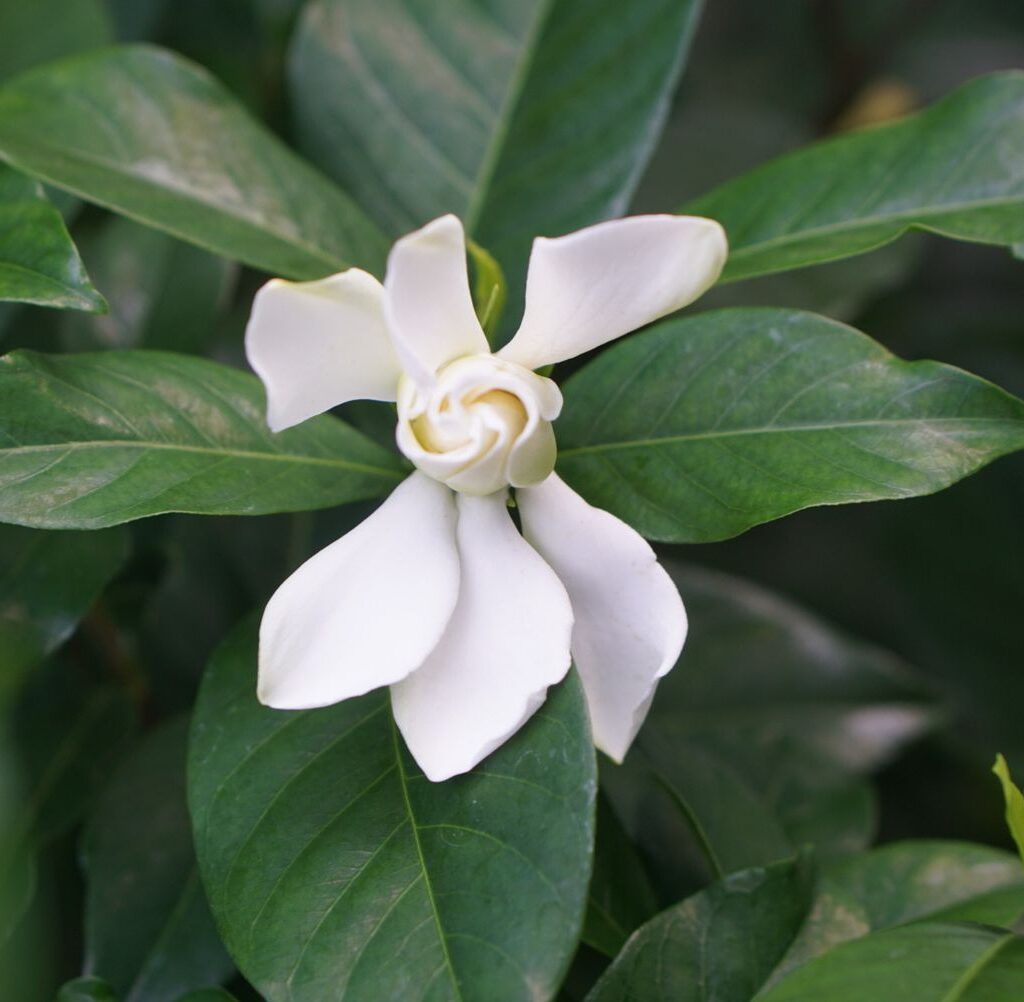
To water jasmine correctly, it’s important to first understand the plant’s natural preferences:
- Native regions: Warm, tropical, and subtropical areas of Asia, Africa, and the Mediterranean.
- Sun requirements: Most jasmine varieties thrive in full to partial sun.
- Soil preference: Well-drained, rich, slightly acidic to neutral soil (pH 6.0–7.0).
- Drought tolerance: Moderate — jasmine can tolerate short dry spells once mature, but young plants require consistent moisture.
Given its origins and shallow root system, jasmine prefers even, consistent moisture without waterlogging, making proper watering essential for its health and bloom production.
How Often Should You Water a Jasmine Plant?
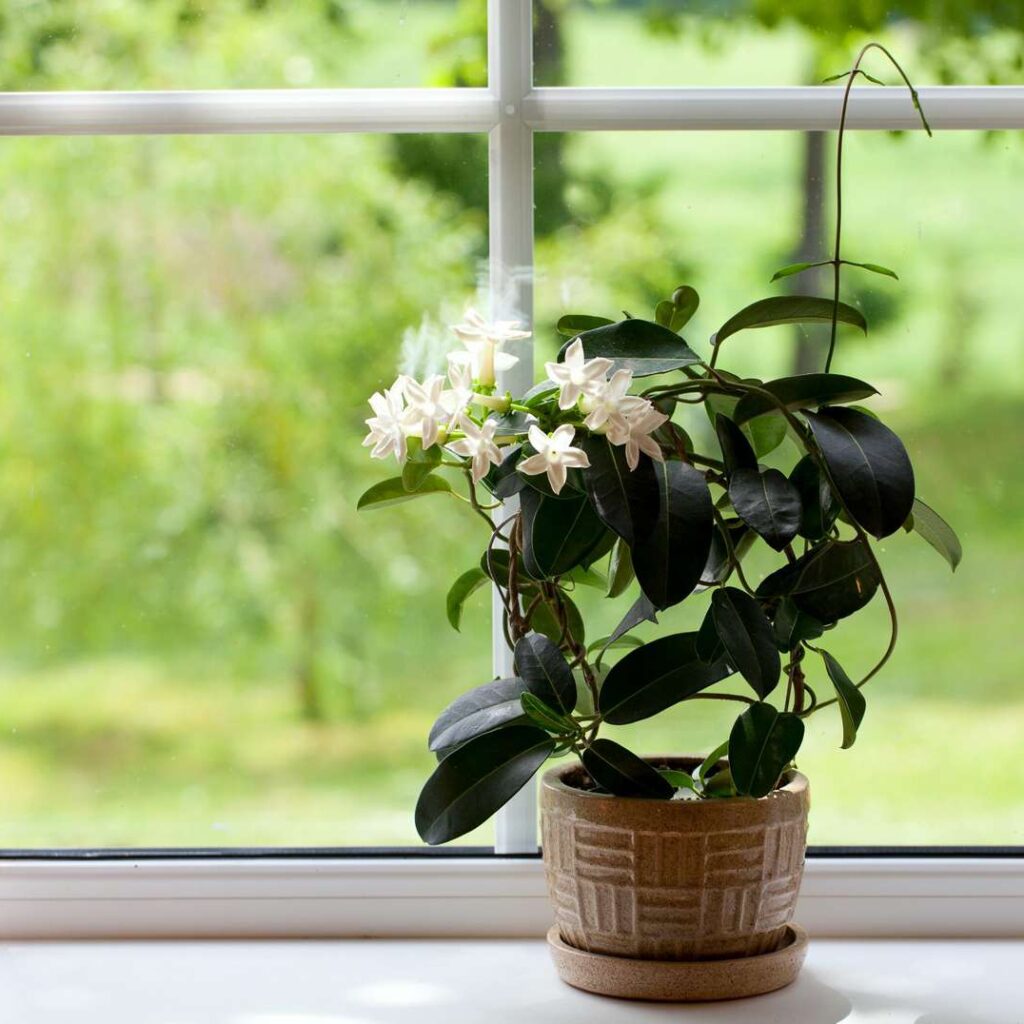
The frequency of watering a jasmine plant depends on several factors such as its age, growing location (pot or ground), climate, and season. Below is a helpful breakdown:
Newly Planted Jasmine:
- Water every 2–3 days for the first 3–4 weeks after planting.
- Ensure the soil stays consistently moist, but never soggy.
- Deep watering helps establish strong root systems.
Established Jasmine (In-Ground):
- Water once every 5–7 days during hot, dry weather.
- Reduce to once every 7–14 days in cooler or rainy periods.
- Allow the top 1–2 inches of soil to dry slightly between waterings.
Potted Jasmine:
- Check the top inch of soil every 2–3 days.
- Water thoroughly when it feels dry.
- In hot summers, watering may be needed every other day.
- During cooler months, reduce watering to once a week or less.
Seasonal Watering Guide for Jasmine

Jasmine’s water needs change with the seasons, especially in areas with distinct weather shifts. Here’s a seasonal watering chart for reference:
| Season | Watering Frequency | Notes |
|---|---|---|
| Spring (Active Growth) | Every 5–7 days | Increase frequency during warm spells. |
| Summer (Peak Bloom & Heat) | Every 2–4 days (potted) / Every 5–7 days (ground) | Deep, regular watering essential during heatwaves. |
| Fall (Cooling Weather) | Every 7–10 days | Gradually reduce watering as growth slows. |
| Winter (Dormant or Slow Growth) | Every 14–21 days | Water sparingly, especially for outdoor plants. |
Factors Influencing Jasmine’s Watering Needs
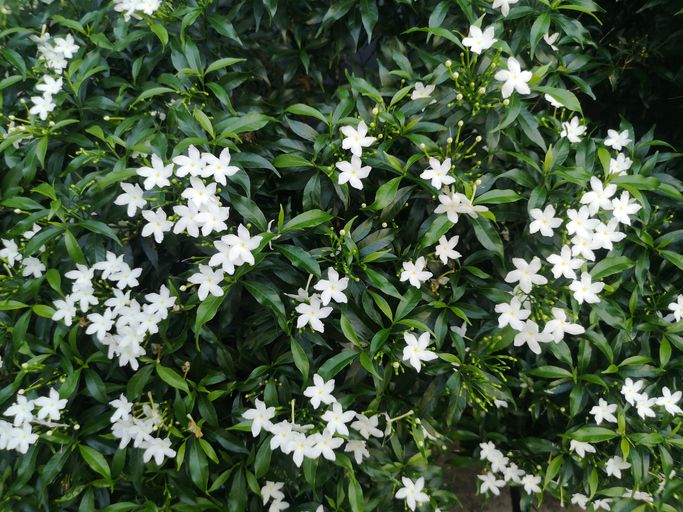
Several factors influence how often jasmine should be watered:
Soil Type
- Sandy soils drain quickly and require more frequent watering.
- Clay soils retain moisture but can cause waterlogging if not well-drained.
- Loamy, well-drained soil is ideal for jasmine.
Climate and Weather
- High temperatures, intense sun, and wind increase evaporation and soil drying.
- Cool, cloudy, or rainy weather reduces water needs.
Pot Size and Material
- Smaller pots dry out faster than larger ones.
- Terracotta pots are porous and lose moisture quicker than glazed ceramic or plastic pots.
Plant Age and Root Development
- Newly planted jasmine requires frequent watering to establish roots.
- Mature jasmine plants can withstand short dry spells but still prefer consistent moisture.
How to Check If Your Jasmine Needs Water
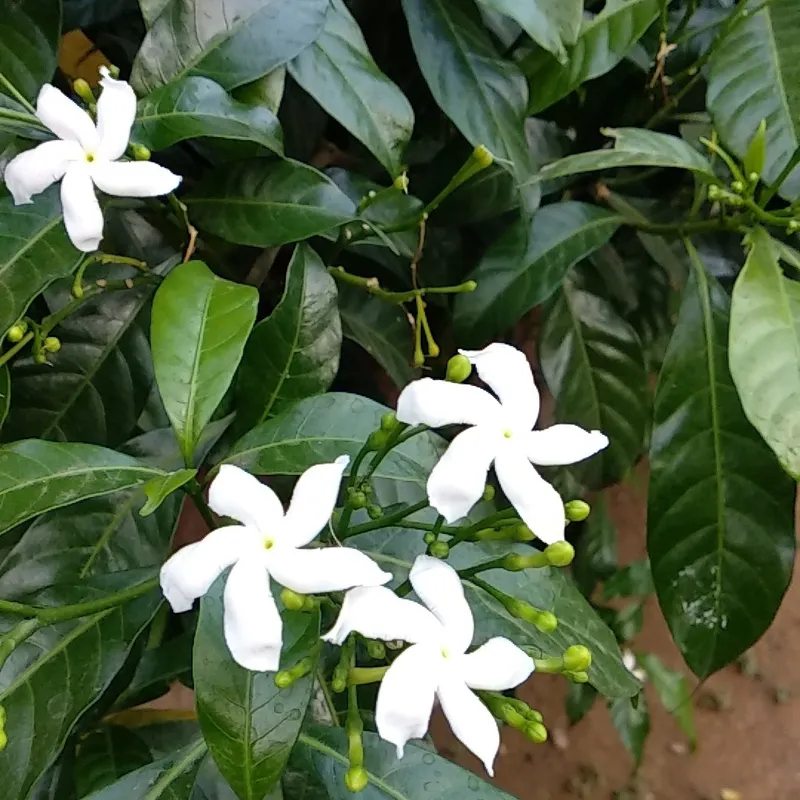
The simplest way to know if your jasmine needs watering is through a soil moisture check:
- Insert your finger 1–2 inches into the soil.
- If the soil feels dry at that depth, it’s time to water.
- If it feels moist, wait another day or two and check again.
For container-grown jasmine, you can also lift the pot; if it feels noticeably lighter than usual, the soil may be dry.
Best Watering Techniques for Jasmine Plants
Proper watering techniques are just as important as watering frequency. Follow these practices for healthy, flourishing jasmine:
Water Deeply and Evenly
- Ensure the water penetrates 6–8 inches into the soil for in-ground jasmine.
- For potted jasmine, water until it starts to drain from the bottom.
Avoid Overhead Watering
- Wet leaves can promote fungal diseases like powdery mildew.
- Use a watering can or hose directed at the plant’s base.
Water Early in the Morning
- This allows leaves to dry during the day and prevents fungal issues.
Use Room-Temperature Water
- Avoid using cold water, which can shock the plant’s roots.
Signs of Overwatering and Underwatering
Recognizing symptoms of improper watering helps prevent plant health problems.
Overwatering Symptoms:
- Yellowing leaves.
- Drooping leaves despite wet soil.
- Root rot with mushy, dark, foul-smelling roots.
- Mold or fungus on the soil surface.
Solution:
Reduce watering, improve drainage, and remove affected foliage.
Underwatering Symptoms:
- Dry, crispy, and curled leaves.
- Flower drop and reduced blooming.
- Stunted growth.
- Soil pulling away from the pot or bed edges.
Solution:
Water deeply, then adjust your watering frequency to maintain consistent moisture.
Tips for Keeping Jasmine Plants Healthy and Blooming
- Mulch around jasmine plants in garden beds to retain soil moisture and suppress weeds.
- Use well-draining, organic-rich soil for potted jasmine.
- Fertilize jasmine with a balanced liquid fertilizer every 4–6 weeks during the growing season.
- Regularly prune spent flowers and overgrown stems to promote new growth and blooms.
- Provide at least 4–6 hours of direct sunlight for most jasmine varieties.
- Avoid planting jasmine in areas prone to waterlogging or heavy shade.
Regional Considerations for Watering Jasmine
Depending on your local climate, watering practices may need adjusting:
- Tropical climates: Water moderately but consistently, especially during dry seasons.
- Temperate zones: Follow seasonal guidelines, reducing watering during winter dormancy.
- Arid, desert regions: Water deeply and mulch heavily to retain soil moisture.
- Humid areas: Ensure excellent soil drainage and avoid overwatering during wet months.
Conclusion: Mastering Jasmine Watering for Vibrant Blooms
Watering jasmine correctly is essential to maintain its lush green leaves, prolific blooms, and captivating fragrance. By understanding the plant’s water preferences and adjusting based on factors like weather, soil type, and plant maturity, you’ll set the foundation for a thriving, healthy jasmine plant.
To summarize:
- Water every 2–3 days for new plants.
- Established jasmine: Water every 5–7 days in summer and less in cooler months.
- Potted jasmine: Check soil every 2–3 days, watering when the top inch is dry.
- Always water deeply, allow soil to dry slightly between waterings, and avoid overwatering.
By following these best practices, your jasmine will reward you with continuous blooms, lush foliage, and the enchanting fragrance that makes this plant so treasured in gardens and homes worldwide.
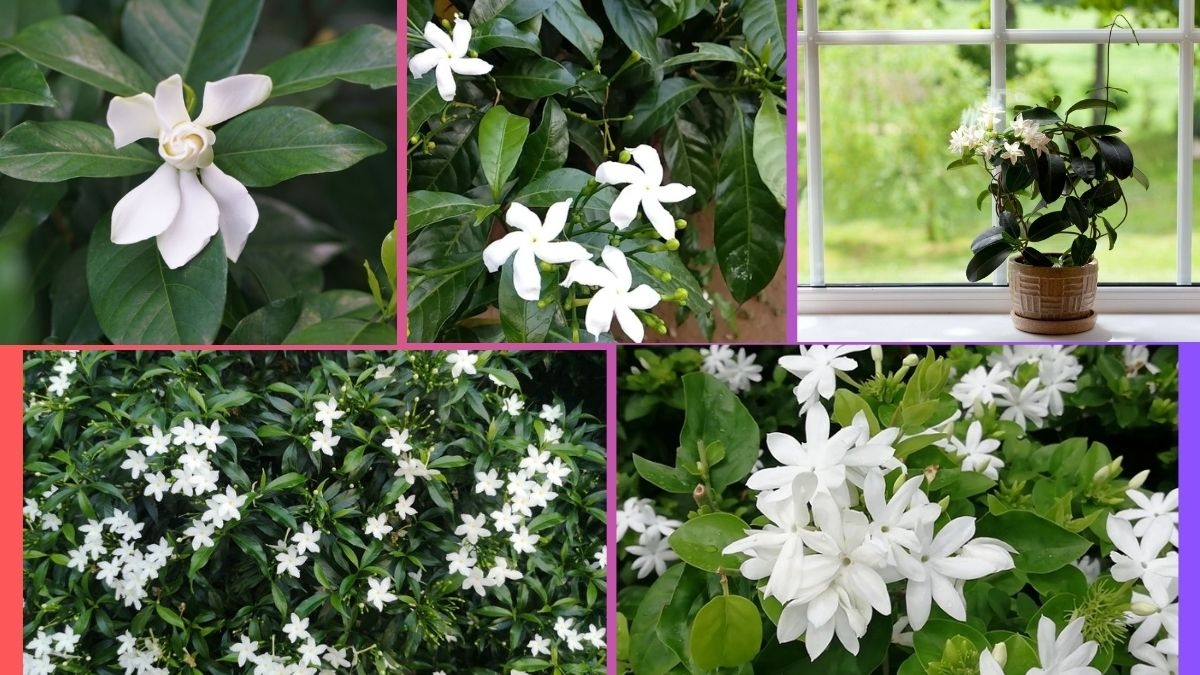



Leave A Comment